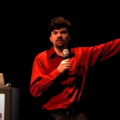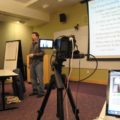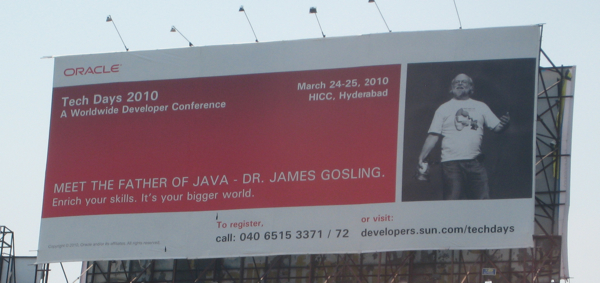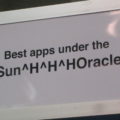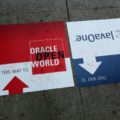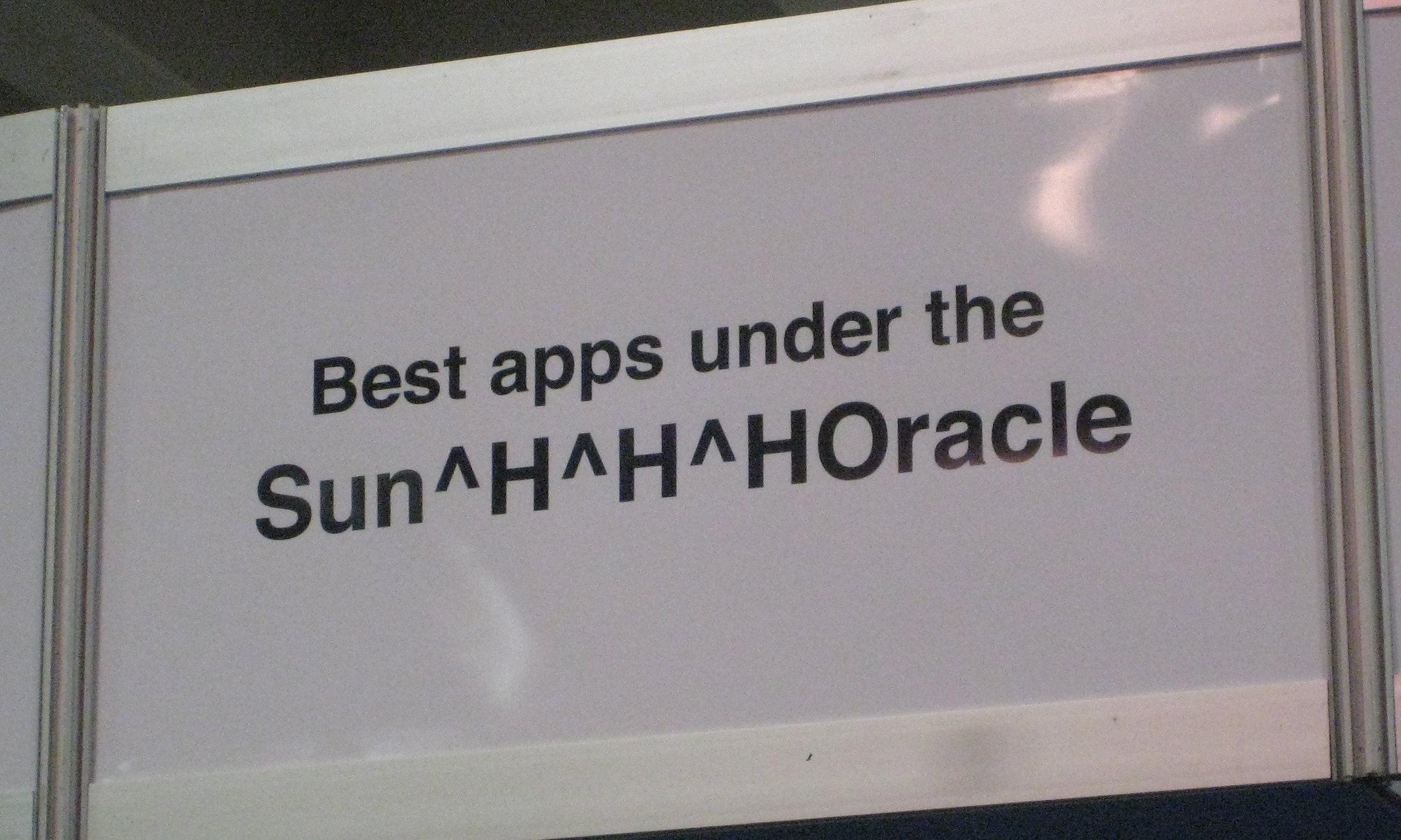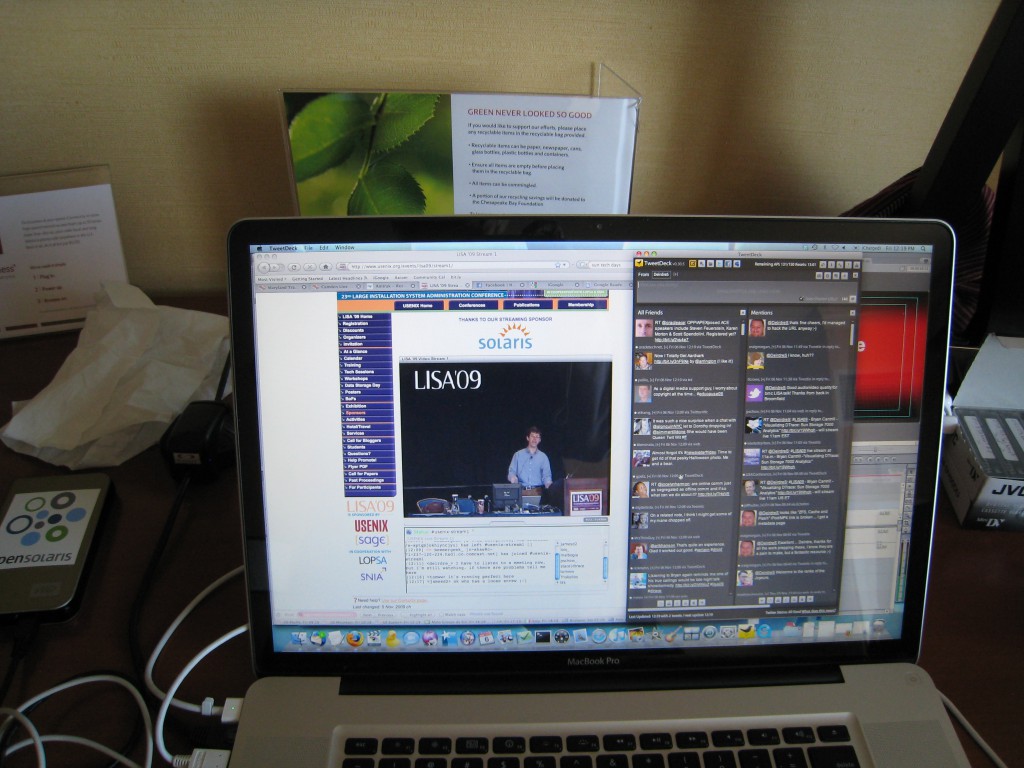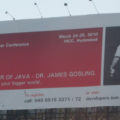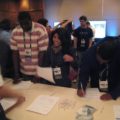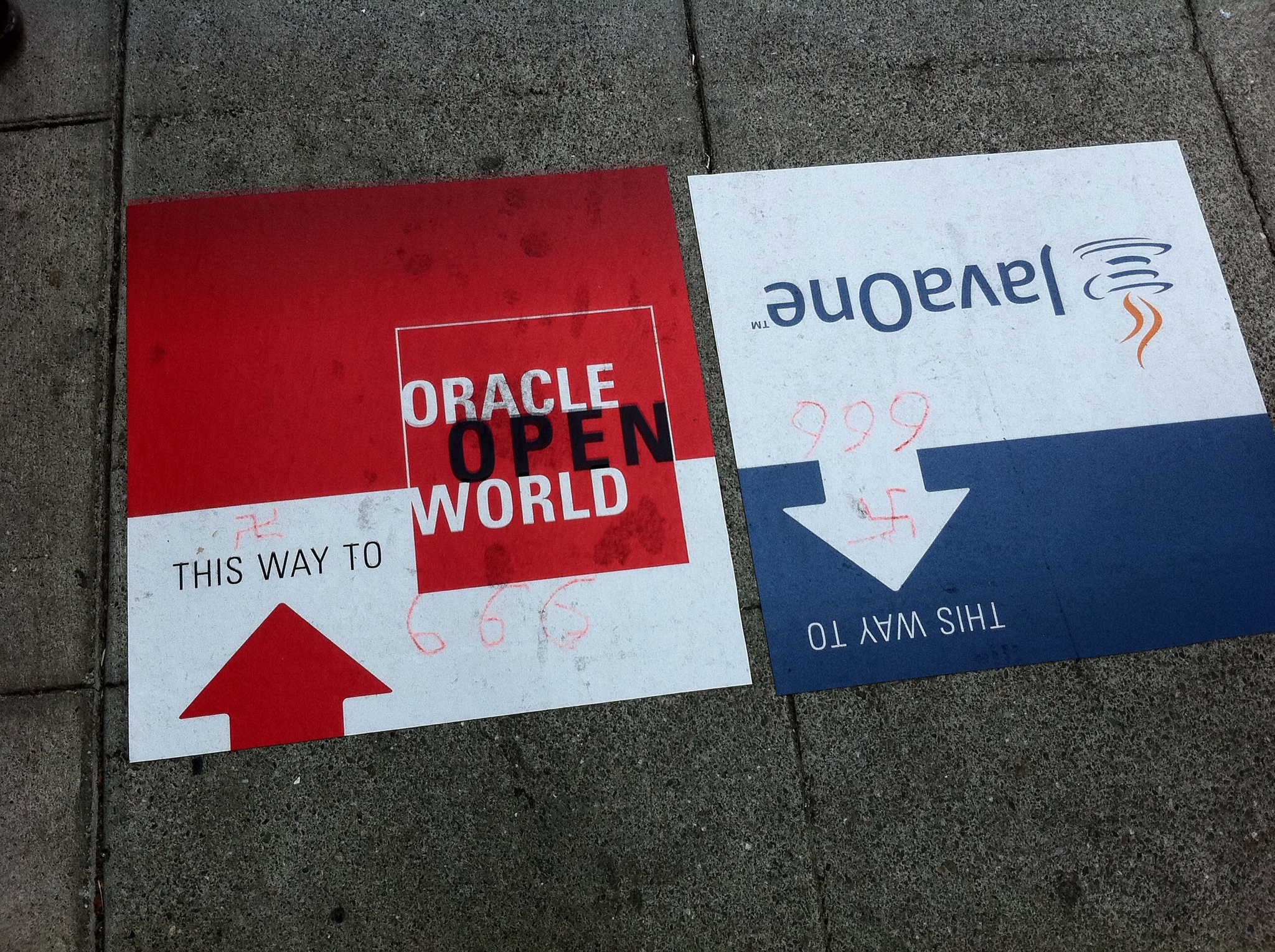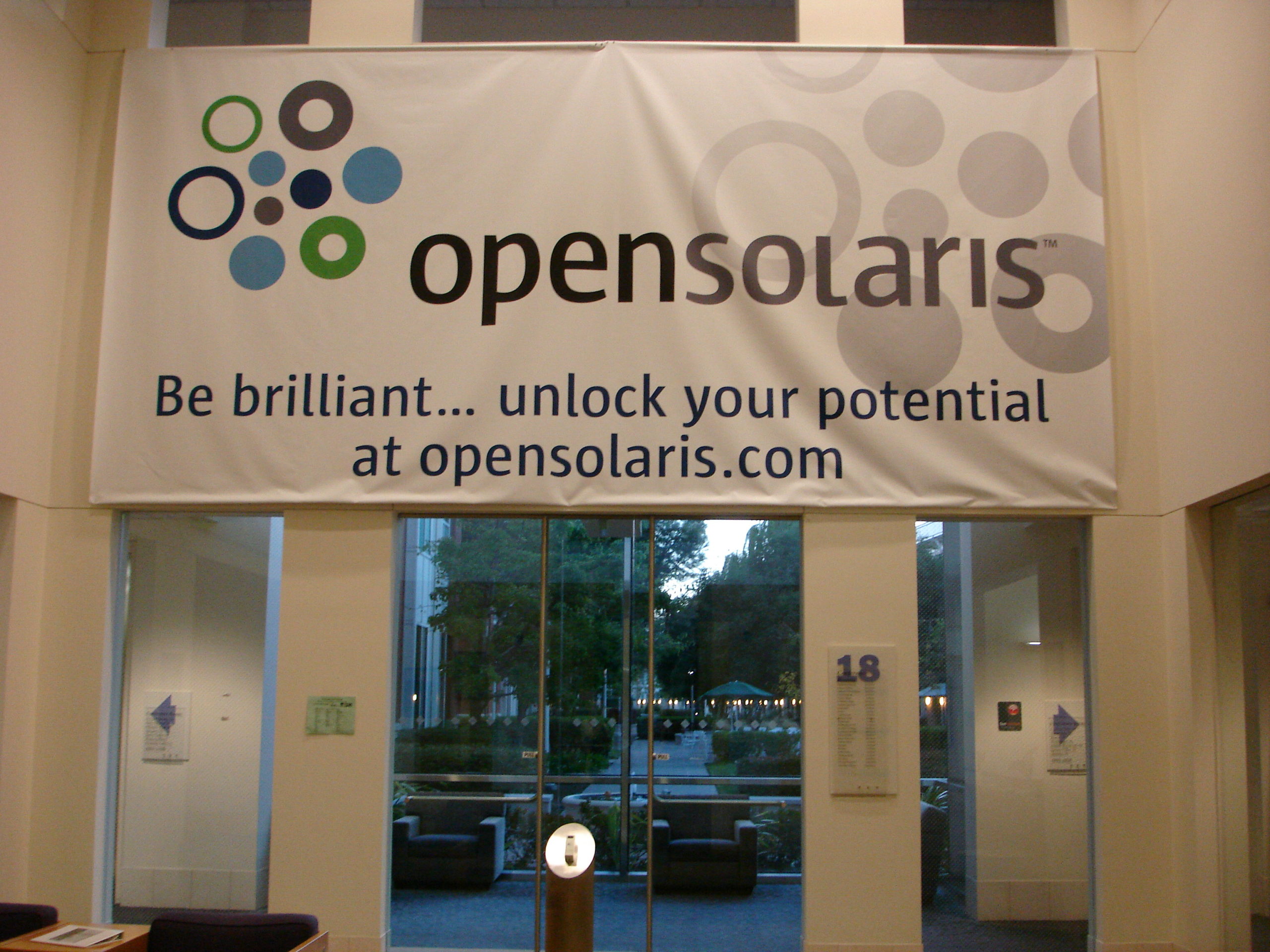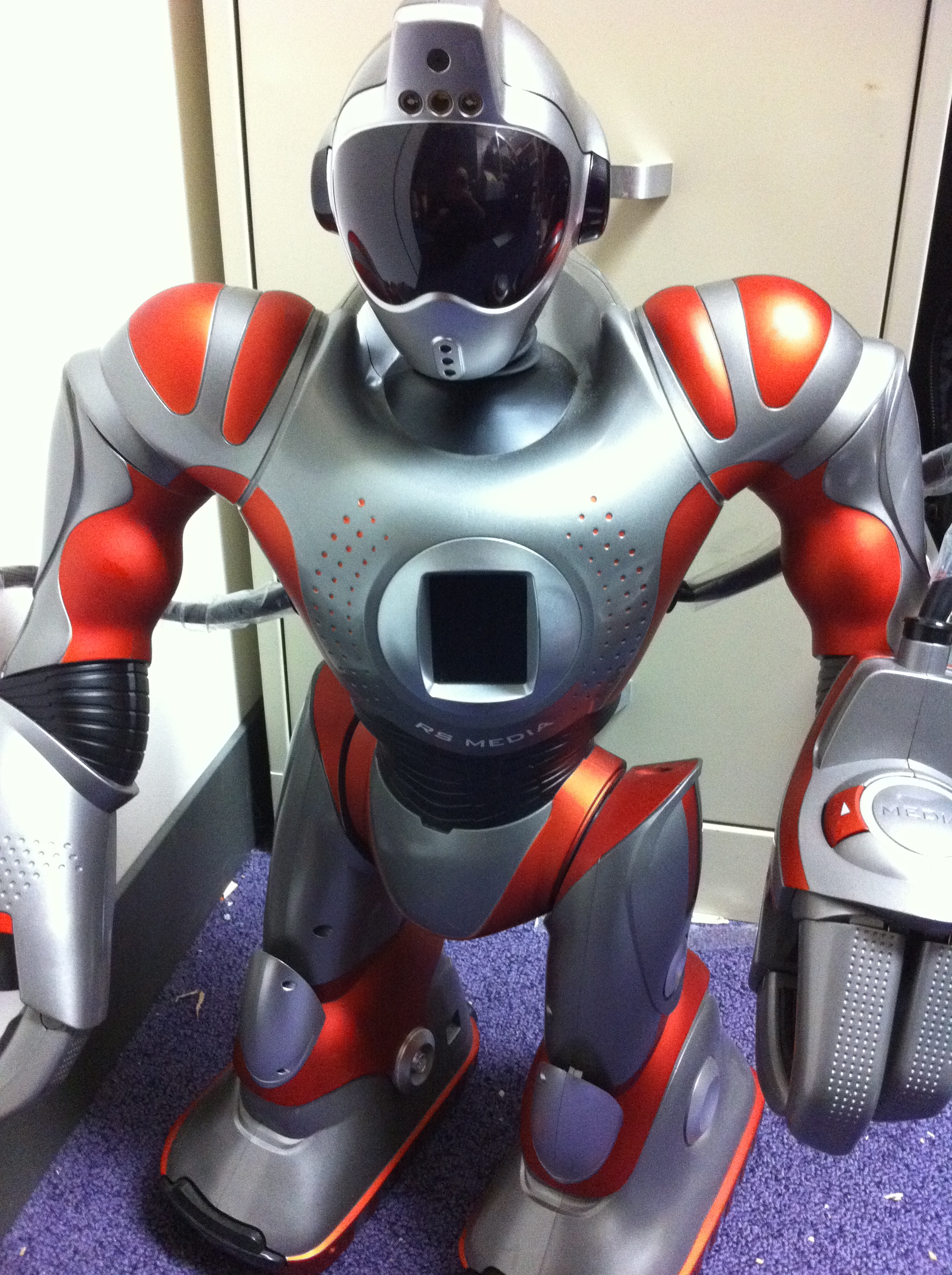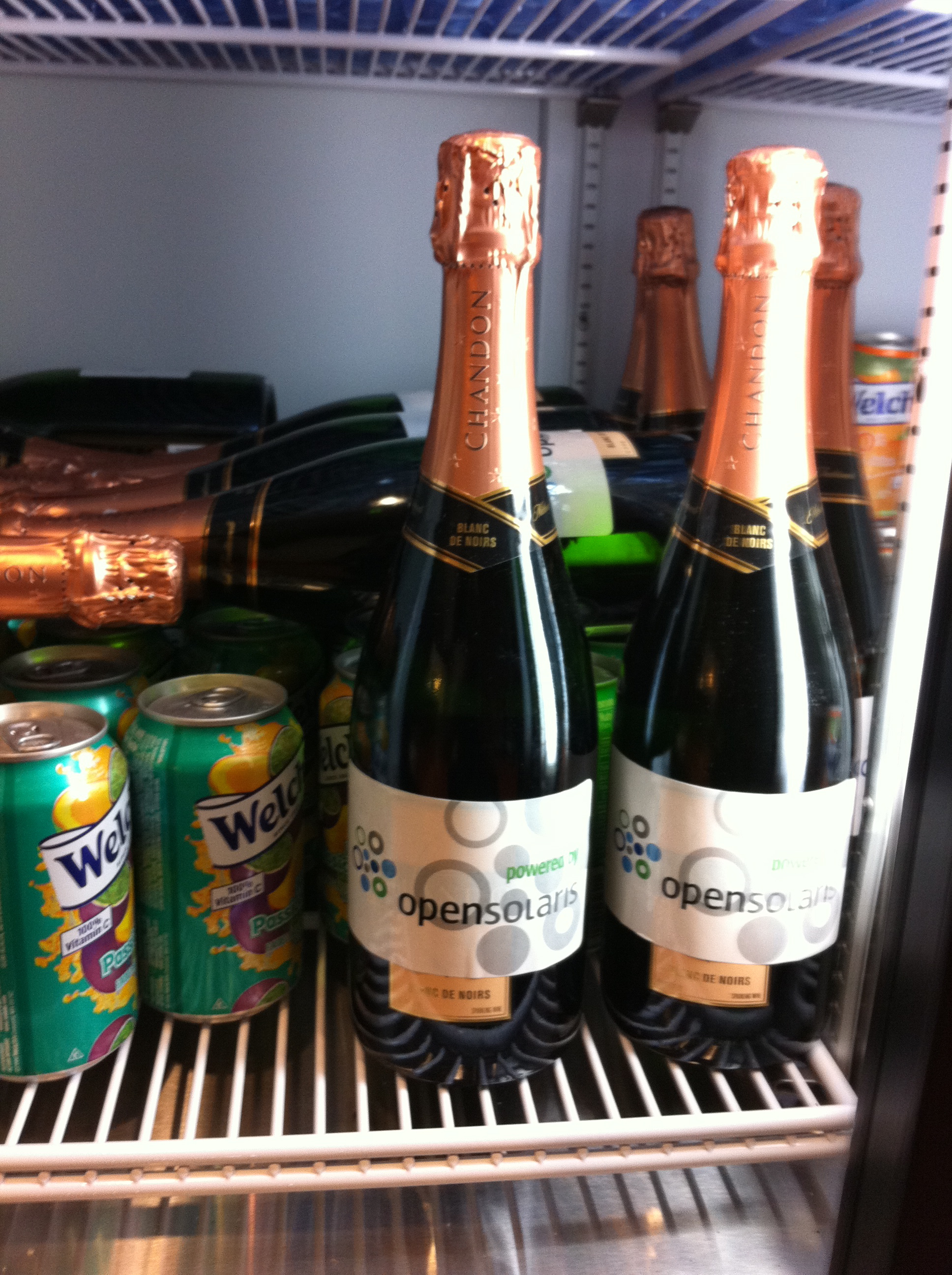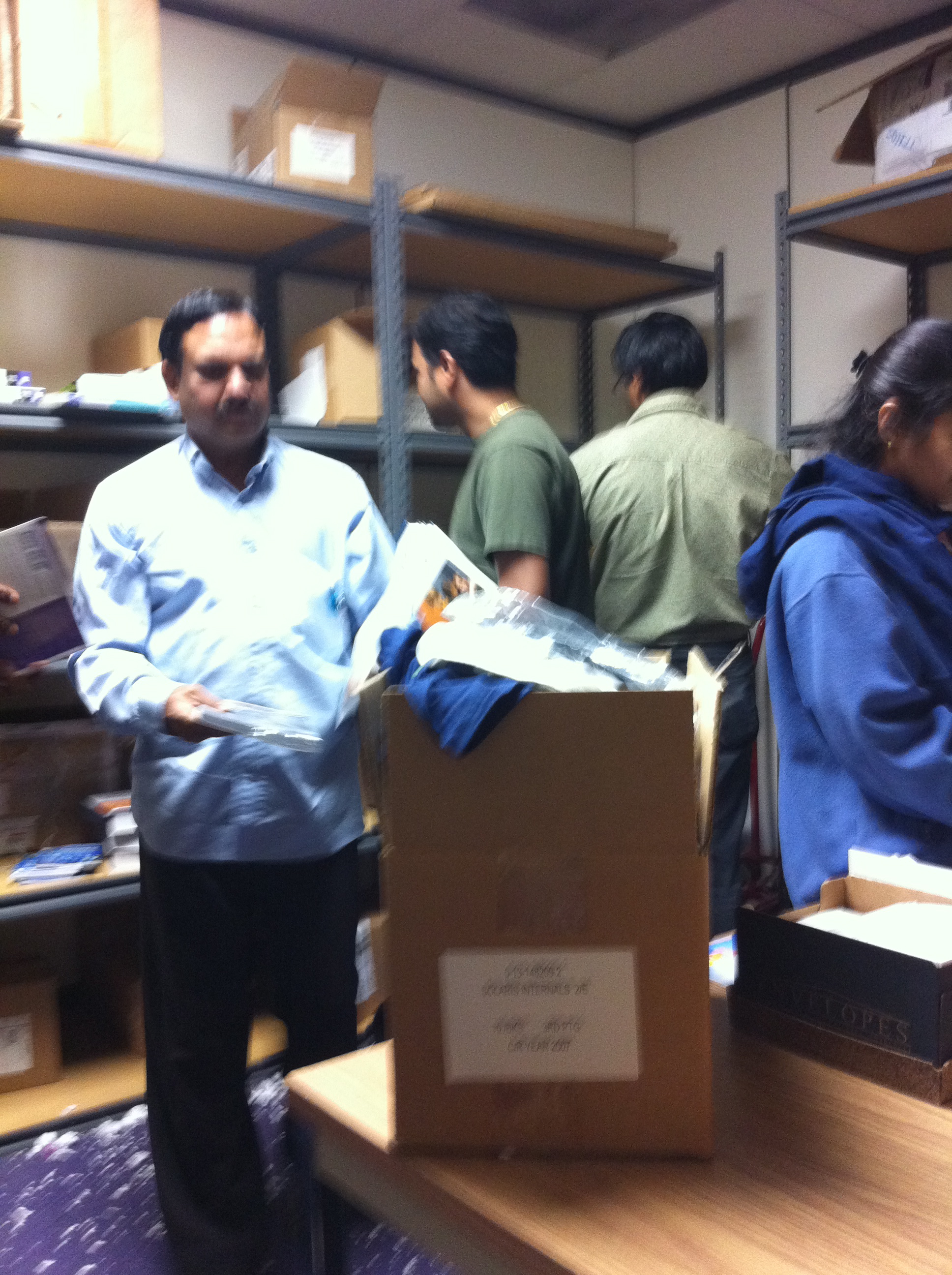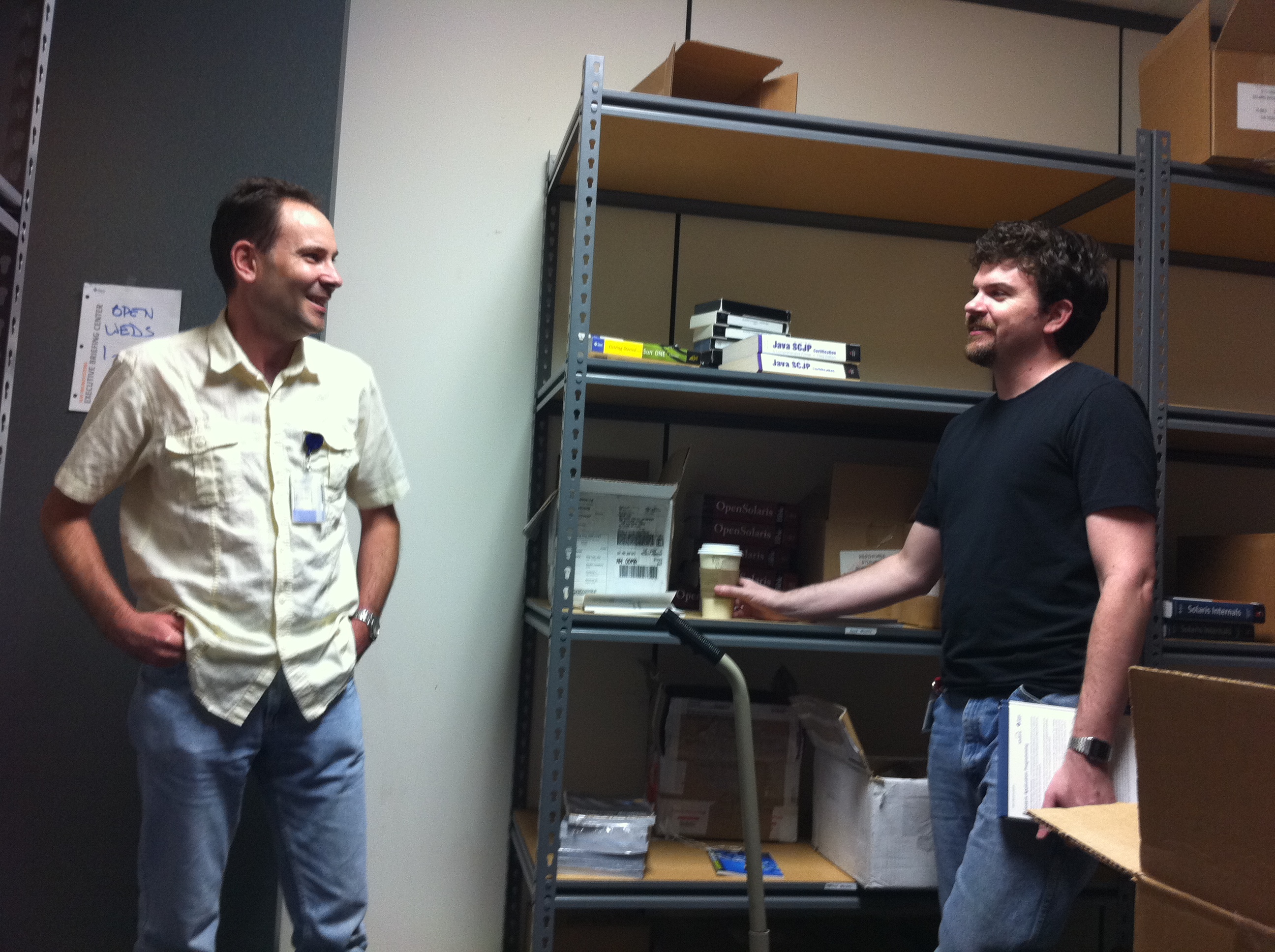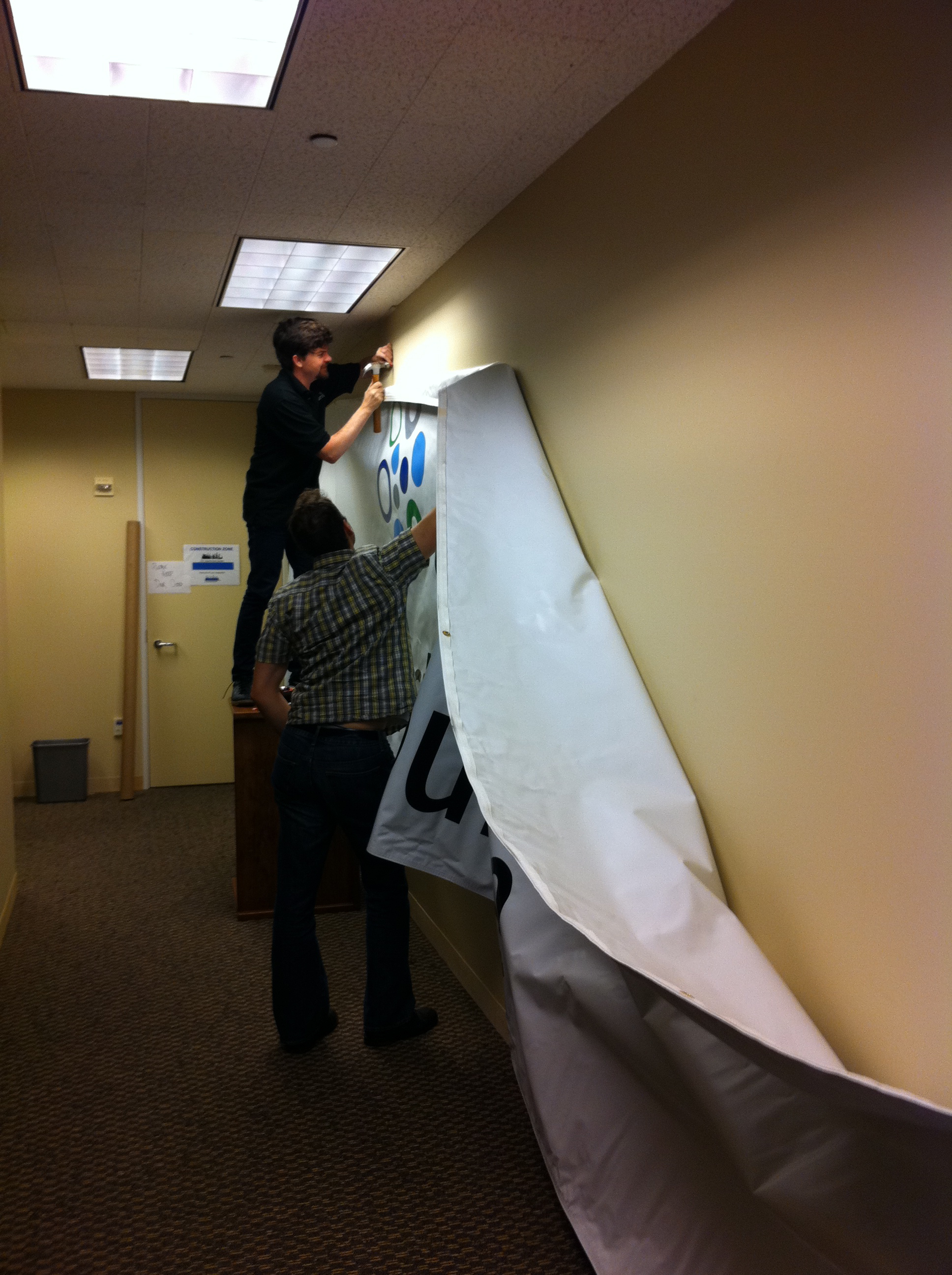Note: Most of these videos have migrated to my YouTube channel. The links below are often broken.
This is an up-to-date listing of nearly 400 technical videos I have been involved in, one way or another, in the six years I’ve been working with Solaris, illumos, SmartOS, and related people, technologies, and companies. They are listed in reverse chron order by date of the event.
Most of the links go directly to the video hosted on YouTube, some still go to a generic link for my old blip.tv channel; I’m still moving stuff over from there.
A handful of these I had nothing to do with, but I list them because they’re useful to the community.
| Event: | Event Date | Title | Video | Speaker | ||||
| ad hoc | 2013-04 | Brendan Writing a Book on Bart | Link | Brendan Gregg | ||||
| SCaLE 2013 | 2013-02 | Linux Systems Performance | Link | Brendan Gregg | ||||
| CACM | 2013-02 | Thinking Methodically about Performance,… | Link | Brendan Gregg | ||||
| illumos / ZFS Days | 2012-10 | Building a Business on illumos | Link | Rod Boothby and panel | ||||
| illumos / ZFS Days | 2012-10 | Darwin’s Storage | Link | |||||
| at Joyent | 2012-10 | DevOps Demystified – An introduction to th | Link | Ben Rockwood | ||||
| illumos / ZFS Days | 2012-10 | DTracing the Cloud | Link | |||||
| illumos / ZFS Days | 2012-10 | Enhanced OS Virtualization for the Cloud | Link | Jerry Jelinek | ||||
| illumos / ZFS Days | 2012-10 | Hybrid Storage Pools: Using Disk and Fla… | Link | Adam Leventhal | ||||
| illumos / ZFS Days | 2012-10 | illumos Day: Chris Nelson, Bayard Bell, R… | Link | |||||
| illumos / ZFS Days | 2012-10 | illumos Day: illumos Innovations That Will… | Link | Adam Leventhal | ||||
| illumos / ZFS Days | 2012-10 | Making the Impossible Possible: Disposab… | Link | Eric Sproul of OmniTI | ||||
| illumos / ZFS Days | 2012-10 | Running Without a ZFS Root Pool | Link | |||||
| illumos / ZFS Days | 2012-10 | SmartOS Operations — Ben Rockwood at | Link | Ben Rockwood | ||||
| illumos / ZFS Days | 2012-10 | The illumos Home Data Center | Link | Dan McDonald of Nexenta | ||||
| illumos / ZFS Days | 2012-10 | Why 4K? | Link | George Wilson | ||||
| illumos / ZFS Days | 2012-10 | ZFS Day Panel: The State of ZFS o | Link | Matt Ahrens and panel | ||||
| illumos / ZFS Days | 2012-10 | ZFS Day: Architecting ZFS Solutions UStream | Link | |||||
| illumos / ZFS Days | 2012-10 | ZFS Day: George Wilson | Link | |||||
| illumos / ZFS Days | 2012-10 | ZFS Day: Justin Gibbs and Will Andrews,… | Link | |||||
| illumos / ZFS Days | 2012-10 | ZFS Performance Analysis and Tools | Link | Brendan Gregg | ||||
| illumos / ZFS Days | 2012-10 | ZFS State of the Union | Link | Matt Ahrens of Delphix | ||||
| BayLISA | 2012-08 | Adding Per-Thread Caching to libumem | Link | Robert Mustacchi | ||||
| BayLISA | 2012-08 | Adding Per-Thread Caching to libumem (footnote) | Link | Bryan Cantrill | ||||
| BayLisa at Joyent 2012 | 2012-08 | DTrace in the Non-Global Zone | Link | Bryan Cantrill | ||||
| BayLISA | 2012-08 | Introduction to SmartOS | Link | Bryan Cantrill | ||||
| BayLISA | 2012-08 | SmartOS ZFS Architecture | Link | Bill Pijewski | ||||
| BayLISA | 2012-08 | SmartOS: An SA Primer | Link | Ben Rockwood | ||||
| FISL, July 2012 | 2012-07 | Corporate Open Source Anti-Patterns: Doi… HD | Link | Bryan Cantrill | ||||
| FISL, July 2012 | 2012-07 | Introduction to Git | Link | Randal Schwartz | ||||
| FISL, July 2012 | 2012-07 | Performance Analysis: The USE Method HD | Link | Brendan Gregg | ||||
| FISL, July 2012 | 2012-07 | Using Video to Communicate Technology HD | Link | Deirdré Straughan | ||||
| NOSIG | 2012-06 | Max Bruning at NOSIG HD | Link | Max Bruning | ||||
| SVLUG May 2,012 | 2012-05 | illumos Hardware Support | Link | Bryan Cantrill | ||||
| SVLUG May 2,012 | 2012-05 | illumos Key Technologies | Link | Bryan Cantrill | ||||
| SVLUG May 2,012 | 2012-05 | illumos Technologies for Embedded Systems | Link | Bryan Cantrill | ||||
| SVLUG May 2,012 | 2012-05 | Packaging in illumos | Link | Bryan Cantrill | ||||
| SVLUG May 2,012 | 2012-05 | SVLUG Comparative Operating Systems … 1st hour | Link | Bryan Cantrill | ||||
| SVLUG May 2012 | 2012-05 | SVLUG Comparative Operating Systems… 2nd hour | Link | Bryan Cantrill | ||||
| SVLUG May 2,012 | 2012-05 | Virtualization and the Future of illumo | Link | Bryan Cantrill | ||||
| SVLUG May 2,012 | 2012-05 | Why You Need ZFS | Link | Bryan Cantrill | ||||
| dtrace.conf 2012 | 2012-04 | A Carousel of DTrace | Link | various | ||||
| dtrace.conf 2012 | 2012-04 | dtrace.conf 12 – Barriers to DTrace Adoption | Link | |||||
| dtrace.conf 2012 | 2012-04 | dtrace.conf 2012 – Clang Parser for DTrace | Link | |||||
| dtrace.conf 2012 | 2012-04 | dtrace.conf 2012 – Control Flow & Langua… | Link | |||||
| dtrace.conf 2012 | 2012-04 | dtrace.conf 2012 – DTrace and Erlang | Link | Scott Fritchie | ||||
| dtrace.conf 2012 | 2012-04 | dtrace.conf 2012 – DTrace in node.js | Link | |||||
| dtrace.conf 2012 | 2012-04 | dtrace.conf 2012 – DTrace on FreeBSD | Link | |||||
| dtrace.conf 2012 | 2012-04 | dtrace.conf 2012 – DTrace on Linux | Link | |||||
| dtrace.conf 2012 | 2012-04 | dtrace.conf 2012 – DTrace State of the Union | Link | Bryan Cantrill | ||||
| dtrace.conf 2012 | 2012-04 | dtrace.conf 2012 – More Visualizations | Link | |||||
| dtrace.conf 2012 | 2012-04 | dtrace.conf 2012 – Setting the Agenda | Link | Bryan Cantrill | ||||
| dtrace.conf 2012 | 2012-04 | dtrace.conf 2012 – Visualizations | Link | Brendan Gregg | ||||
| dtrace.conf 2012 | 2012-04 | dtrace.conf 2012 – Visualizations, Enabling… | Link | |||||
| dtrace.conf 2012 | 2012-04 | dtrace.conf 2012 – ZFS Provider | Link | |||||
| dtrace.conf 2012 | 2012-04 | dtrace.conf 2012- Dynamic Translators | Link | |||||
| dtrace.conf 2012 | 2012-04 | dtrace.conf 2012- User-Level CTF | Link | |||||
| ad hoc | 2012-03 | Converting Virtual Appliance Packages for | Link | Orlando Vazquez | ||||
| SCALE, Jan 2012 | 2012-01 | Developing for illumos – 1 HD | Link | Garrett D’Amore | ||||
| SCALE, Jan 2012 | 2012-01 | Developing for illumos – 2 HD | Link | Garrett D’Amore | ||||
| SCALE, Jan 2012 | 2012-01 | Developing for illumos – 3 HD | Link | Garrett D’Amore | ||||
| SCALE, Jan 2012 | 2012-01 | Developing for illumos – 4 HD | Link | Garrett D’Amore | ||||
| SCALE, Jan 2012 | 2012-01 | Developing for illumos – 5 HD | Link | Garrett D’Amore | ||||
| SCALE, Jan 2012 | 2012-01 | Developing for illumos – 5 HD | Link | Garrett D’Amore | ||||
| SCALE, Jan 2012 | 2012-01 | Experiences Starting an Open Source Ope… 1 | Link | Garrett D’Amore | ||||
| SCALE, Jan 2012 | 2012-01 | Experiences Starting an Open Source Ope… 2 | Link | Garrett D’Amore | ||||
| SCALE, Jan 2012 | 2012-01 | Experiences Starting an Open Source Ope… 3 | Link | Garrett D’Amore | ||||
| SCALE, Jan 2012 | 2012-01 | Experiences Starting an Open Source Ope… 4 | Link | Garrett D’Amore | ||||
| SCALE, Jan 2012 | 2012-01 | Experiences Starting an Open Source Ope… 4 | Link | Garrett D’Amore | ||||
| SCALE, Jan 2012 | 2012-01 | Performance Analysis: new tools and co 1 | Link | Brendan Gregg | ||||
| SCALE, Jan 2012 | 2012-01 | Performance Analysis: new tools and co 2 | Link | Brendan Gregg | ||||
| SCALE, Jan 2012 | 2012-01 | Performance Analysis: new tools and co 3 | Link Brendan Gregg | |||||
| SCALE, Jan 2012 | 2012-01 | Performance Analysis: new tools and co 4 | Link | Brendan Gregg | ||||
| illumos user group Jan 2,012 | 2012-01 | Testing ZFS in illumos | Link | Delphix | ||||
| illumos user group Jan 2,012 | 2012-01 | The Future of LibZFS – Part 3 HD | Link | Matt Ahrens | ||||
| illumos user group Jan 2,012 | 2012-01 | The Future of LibZFS Part 1 HD | Link | Matt Ahrens | ||||
| illumos user group Jan 2,012 | 2012-01 | The Future of LibZFS, Part 2 HD | Link | Matt Ahrens | ||||
| SCALE, Jan 2012 | 2012-01 | Using SmartOS as a Hypervisor – 1 | Link | Robert Mustacchi | ||||
| SCALE, Jan 2012 | 2012-01 | Using SmartOS as a Hypervisor – 2 | Link Robert Mustacchi | |||||
| SCALE, Jan 2012 | 2012-01 | Using SmartOS as a Hypervisor – 3 | Link | Robert Mustacchi | ||||
| SCALE, Jan 2012 | 2012-01 | Using SmartOS as a Hypervisor – 4 | Link | Robert Mustacchi | ||||
| SCALE, Jan 2012 | 2012-01 | Using SmartOS as a Hypervisor – 5 | Link Robert Mustacchi | |||||
| illumos user group Jan 2,012 | 2012-01 | ZFS Backwards Compatibility Testing with … HD | Link | Delphix | ||||
| illumos user group Jan 2,012 | 2012-01 | ZFS Code Comments HD | Link | Bryan Cantrill | ||||
| illumos user group Jan 2012 | 2012-01 | ZFS Feature Flags – Part 1 HD | Link | Delphix | ||||
| illumos user group Jan 2,012 | 2012-01 | ZFS Feature Flags – Part 2 HD | Link | Delphix | ||||
| illumos user group Jan 2,012 | 2012-01 | ZFS Feature Flags – Part 3 HD | Link Delphix | |||||
| USENIX LISA 2011 | 2011-12 | Fork Yeah! The Rise and Development of illumos | Link | Bryan Cantrill | ||||
| USENIX LISA 2011 | 2011-12 | The DevOps Transformation | Link | Ben Rockwood | ||||
| ad hoc | 2011-11 | The DTrace Book and Solaris 11 | Link Brendan Gregg | |||||
| Solaris Family Reunion at Joyent, Oct 2011 | 2011-10 | Solaris Family Reunion | Link | Bryan Cantrill | ||||
| Surge 2011 | 2011-09 | Building a Real-Time Cloud Analytics Service with Node.js | Link | Bryan Cantrill | ||||
| KVM Conf 2011 | 2011-08 | Experiences Porting KVM to SmartOS | Link | Bryan Cantrill | ||||
| at Joyent | 2011-07 | Computing History with Bryan Cantrill | Link | Bryan Cantrill | ||||
| at Joyent | 2011-07 | Computing History with Bryan Cantrill Part 2 | Link | Bryan Cantrill | ||||
| at Joyent | 2011-07 | Visualizing Latency with Heatmaps | Link | Dave Pacheco | ||||
| at Joyent | 2011-06 | Cloud Analytics Advanced Visualization | Link | Brendan Gregg | ||||
| at Joyent | 2011-06 | Cloud Analytics Basic Visualization | Link | Brendan Gregg | ||||
| 2011-06 | Cloud Analytics Definitions and Context | Link | Brendan Gregg | |||||
| at Joyent | 2011-06 | Cloud Analytics Ease of Use | Link | Brendan Gregg | ||||
| at Joyent | 2011-06 | MySQL Query Latency with DTrace 1 | Link | Brendan Gregg | ||||
| at Joyent | 2011-06 | MySQL Query Latency with DTrace 2 | Link | Brendan Gregg | ||||
| at Joyent | 2011-06 | MySQL Query Latency with DTrace 3 | Link | Brendan Gregg | ||||
| at Joyent | 2011-06 | MySQL Query Latency with DTrace 4 | Link | Brendan Gregg | ||||
| at Joyent | 2011-06 | MySQL Query Latency with DTrace 5 | Link | Brendan Gregg | ||||
| Velocity | 2011-06 | The Best of Velocity – Instrumenting the real-time web: Node.js, DTrace and the Robinson Projection | Link | Bryan Cantrill | ||||
| illumos user group | 2011-06 | Illumos Meetup 1 | Link | various | ||||
| illumos user group | 2011-06 | Illumos Meetup 2 | Link | various | ||||
| illumos user group | 2011-06 | Illumos Meetup 3 | Link | various | ||||
| illumos user group | 2011-06 | Illumos Meetup 4 | Link | various | ||||
| illumos user group | 2011-06 | Illumos Meetup 5 | Link | various | ||||
| illumos user group | 2011-06 | Illumos Meetup 6 | Link | various | ||||
| at Joyent | 2011-05 | SmartDataCenter Performance Disk IO Throttling for Optimal Performance | Link | Bill Pijewski | ||||
| at Joyent | 2011-04 | mpstat All the Fields | Link | Brendan Gregg | ||||
| at Joyent | 2011-04 | mpstat Digging Deeper | Link | Brendan Gregg | ||||
| at Joyent | 2011-04 | mpstat Key Fields | Link | Brendan Gregg | ||||
| at Joyent | 2011-04 | uptime Load Averages | Link | Brendan Gregg | ||||
| node.js Community Event March 1, 2011 | 2011-03 | Cloud Analytics Screencast | Link | Bryan Cantrill, Brendan Gregg | ||||
| Vancouver, Jan 2011 | 2011-01 | SmartOS Diskless Boot | Link | Bryan Cantrill | ||||
| USENIX LISA 2010 | 2010-12 | Visualizations for Performance Analysis (and More) – USENIX copy | Link | Brendan Gregg | ||||
| USENIX LISA 2010 | 2010-11 | DTrace BoF at LISA10 | Link | Brendan Gregg, Jim Mauro | ||||
| USENIX LISA 2010 | 2010-11 | DTrace BoF at LISA10 Part 2 | Link | Brendan Gregg, Jim Mauro | ||||
| Solaris Summit at USENIX LISA 2010 | 2010-11 | IPS Part 2 | Link | Bart Smaalders | ||||
| Solaris Summit at USENIX LISA 2010 | 2010-11 | IPS Part 3 | Link | Bart Smaalders | ||||
| USENIX LISA 2010 | 2010-11 | lisa10-vijay2 | Link | |||||
| Solaris Summit at USENIX LISA 2010 | 2010-11 | New Security Features in Oracle Solaris 11 Express | Link | |||||
| Solaris Summit at USENIX LISA 2010 | 2010-11 | Solaris 11 Deployment, 1 of 3 | Link | |||||
| Solaris Summit at USENIX LISA 2,010 | 2010-11 | Solaris 11 Deployment, 2 of 3 | Link | |||||
| Solaris Summit at USENIX LISA 2,010 | 2010-11 | Solaris 11 Deployment, 3 of 3 | Link | |||||
| Solaris Summit at USENIX LISA 2,010 | 2010-11 | Solaris 11 Engineering Panel | Link | |||||
| Solaris Summit at USENIX LISA 2,010 | 2010-11 | Solaris 11 Engineering Panel 2 | Link | |||||
| Solaris Summit at USENIX LISA 2,010 | 2010-11 | Solaris 11 Express: Zones, part 1 of 2 | Link | |||||
| Solaris Summit at USENIX LISA 2,010 | 2010-11 | Solaris 11 Express: Zones, part 2 of 2 | Link | |||||
| Solaris Summit at USENIX LISA 2,010 | 2010-11 | Solaris 11 Image Packaging System – 1 | Link | |||||
| Solaris Summit at USENIX LISA 2,010 | 2010-11 | Solaris 11 Networking 1 of 3 | Link | |||||
| Solaris Summit at USENIX LISA 2,010 | 2010-11 | Solaris 11 Networking 2 of 3 | Link | |||||
| Solaris Summit at USENIX LISA 2,010 | 2010-11 | Solaris 11 Networking 3 of 3 | Link | |||||
| Solaris Summit at USENIX LISA 2,010 | 2010-11 | Solaris 11 Packaging & Installation 1 | Link | |||||
| Solaris Summit at USENIX LISA 2,010 | 2010-11 | Solaris 11 Packaging & Installation 2 | Link | |||||
| Solaris Summit at USENIX LISA 2,010 | 2010-11 | Solaris Cluster 3.2 1/09: RAC in Zones & Quorum Monitoring | Link | |||||
| USENIX LISA 2010 | 2010-11 | Where’d BigAdmin and the Docs Go? 1 | Link | |||||
| USENIX LISA 2,010 | 2010-11 | Where’d BigAdmin and the Docs Go? 2 | Link | |||||
| FROSUG | 2010-10 | Little Shop Of Performance Horrors Part 1 | Link | Brendan Gregg | ||||
| FROSUG | 2010-10 | Little Shop Of Performance Horrors Part 2 | Link | Brendan Gregg | ||||
| FROSUG | 2010-10 | Little Shop Of Performance Horrors Part 3 | Link | Brendan Gregg | ||||
| Solaris Family Reunion | 2010-10 | Solaris Family Reunion | Link | Bryan Cantrill | ||||
| San Francisco | 2010-10 | System Duty Cycle Scheduling Class | Link | George Wilson | ||||
| San Francisco | 2010-10 | Triple Parity RAID-Z | Link | George Wilson | ||||
| San Francisco | 2010-10 | ZFS Pool Split | Link | George Wilson | ||||
| SURGE | 2010-09 | Bryan Cantrill & Brendan Gregg ~ The Real-Time Web in the Real | Link | Bryan Cantrill & Brendan Gregg | ||||
| SURGE | 2010-09 | David Pacheco ~ When Node.js Goes Wrong. | Link | David Pacheco | ||||
| OOW 2010 | 2010-09 | How to Build Better Applications with DTra… | Link | Brendan Gregg | ||||
| OOW 2010 | 2010-09 | How to Build Better Applications with DTrace | Link | Brendan Gregg | ||||
| MPK | 2010-08 | DTrace and ZBall HD | Link | Bryan Cantrill | ||||
| illumos launch Aug 2010 | 2010-08 | illumos: Forking is Healthy | Link | Bryan Cantrill | ||||
| MPK | 2010-08 | Solaris History: Crystal Springs and Teleg | Link | Bryan Cantrill | ||||
| MPK | 2010-08 | Solaris History: Muir Woods Conference R… | Link | Bryan Cantrill | ||||
| MPK | 2010-08 | Solaris History: The Marker Game | Link | Bryan Cantrill | ||||
| Sun Tech Days Hyderabad | 2010-03 | Dead ends in multithreads application development | Link | Peter Karlsson | ||||
| Sun Tech Days Hyderabad | 2010-03 | Dead ends in multithreads application development – part 2 of 2 | Link | Peter Karlsson | ||||
| Sun Tech Days Hyderabad | 2010-03 | Developing in a Multicore World – 1 | Link | Peter Karlsson | ||||
| Sun Tech Days Hyderabad | 2010-03 | Developing in a Multicore World – 2 | Link | Peter Karlsson | ||||
| Sun Tech Days Hyderabad | 2010-03 | Diagnosing Live Systems with DTrace | Link | Brian Leonard | ||||
| San Francisco | 2010-03 | DTrace book intro | Link | Brendan Gregg, Jim Mauro | ||||
| Sun Tech Days Hyderabad | 2010-03 | Getting Started with Solaris-1-About Solaris | Link | Brian Leonard | ||||
| Sun Tech Days Hyderabad | 2010-03 | Getting Started with Solaris-2-Where is Everything? | Link | Brian Leonard | ||||
| Sun Tech Days Hyderabad | 2010-03 | Getting Started with Solaris-3-Users | Link | Brian Leonard | ||||
| Sun Tech Days Hyderabad | 2010-03 | Getting Started with Solaris-4-Managing Software | Link | Brian Leonard | ||||
| Sun Tech Days Hyderabad | 2010-03 | Getting Started with Solaris-5-System Services | Link | Brian Leonard | ||||
| Sun Tech Days Hyderabad | 2010-03 | Getting Started with Solaris-6-Networking | Link | Brian Leonard | ||||
| Sun Tech Days Hyderabad | 2010-03 | Getting Started with Solaris-7-Device Names & File Systems | Link | Brian Leonard | ||||
| Perf Talks at Sun | 2010-03 | LUN Alignment | Link | Roch Bourbonnais | ||||
| Sun Tech Days Hyderabad | 2010-03 | Mastering Your Multicore System | Link | |||||
| Sun Tech Days Hyderabad | 2010-03 | Observing Your App and Everything Else it Runs on Using DTrace | Link | Brian Leonard | ||||
| Sun Tech Days Hyderabad | 2010-03 | Observing Your App and Everything Else it Runs on Using DTrace 2 | Link | Brian Leonard | ||||
| Perf Talks at Sun | 2010-03 | Performance Instrumentation Counters | Link | Brendan Gregg, Jim Mauro, Roch Bourbonnais | ||||
| Perf Talks at Sun | 2010-03 | Performance Instrumentation Counters-2 | Link | Brendan Gregg, Jim Mauro, Roch Bourbonnais | ||||
| Perf Talks at Sun | 2010-03 | Performance: Experimentation | Link | Brendan Gregg | ||||
| Perf Talks at Sun | 2010-03 | Performance: Interrupts | Link | Brendan Gregg, Jim Mauro, Roch Bourbonnais | ||||
| Perf Talks at Sun | 2010-03 | Performance: The “Not a Problem” Problem | Link | Brendan Gregg, Jim Mauro, Roch Bourbonnais | ||||
| Sun Tech Days Hyderabad | 2010-03 | Securing Networked Services | Link | Sanjeev Bagewadi | ||||
| Sun Tech Days Hyderabad | 2010-03 | The Problems Solaris Solves – 1 Managing File Systems Effectively | Link | Brian Leonard | ||||
| Sun Tech Days Hyderabad | 2010-03 | The Problems Solaris Solves – 2 – Monitoring and Managing Networks | Link | Brian Leonard | ||||
| Sun Tech Days Hyderabad | 2010-03 | The Problems Solaris Solves – 3 – Zones | Link | Brian Leonard | ||||
| Sun Tech Days Hyderabad | 2010-03 | The Problems Solaris Solves – 4 – Diagnosing Live Systems with DTrace | Link | Brian Leonard | ||||
| USENIX LISA 2009 | 2009-11 | Ben Rockwood & Deirdré Straughan: A Conversation at LISA ’09 | Link | Ben Rockwood & Deirdré Straughan | ||||
| Solaris Security Summit at USENIX LISA Nov 2,009 | 2009-11 | Hardware-Based Isolation and Security for Virtual Machine Network | Link | Sunay Tripathi | ||||
| Solaris Security Summit at USENIX LISA Nov 2009 | 2009-11 | Kerberos Authentication for Web Security | Link | |||||
| Solaris Security Summit at USENIX LISA Nov 2009 | 2009-11 | Multilevel Cluster | Link | Ellard Roush | ||||
| Solaris Security Summit at USENIX LISA Nov 2009 | 2009-11 | OpenSolaris User Groups | Link | Harry Foxwell | ||||
| Solaris Security Summit at USENIX LISA Nov 2009 | 2009-11 | Protecting Services with Built-In Solaris Security Features | Link | Christoph Schuba | ||||
| Solaris Security Summit at USENIX LISA Nov 2009 | 2009-11 | Rethinking Passwords | Link | |||||
| Solaris Security Summit at USENIX LISA Nov 2,009 | 2009-11 | Rethinking Passwords – Part 2 of 2 | Link | |||||
| Solaris Security Summit at USENIX LISA Nov 2,009 | 2009-11 | Solaris Security Overview | Link | Darren Moffat | ||||
| Solaris Security Summit at USENIX LISA Nov 2,009 | 2009-11 | Solaris Security Overview Part 2 of 2 | Link | Darren Moffat | ||||
| Solaris Security Summit at USENIX LISA Nov 2009 | 2009-11 | Solaris Security Summit 09 ZFS Crypto 1 | Link | Darren Moffatt | ||||
| Solaris Security Summit at USENIX LISA Nov 2,009 | 2009-11 | Solaris Security Summit 09 ZFS Crypto 2 | Link | Darren Moffatt | ||||
| Solaris Security Summit at USENIX LISA Nov 2009 | 2009-11 | Solaris Security Summit Introduction | Link | Kathy Jenks | ||||
| Solaris Security Summit at USENIX LISA Nov 2,009 | 2009-11 | Thin Client Delivery for the Enterprise | Link | Dennis Maher | ||||
| Solaris Security Summit at USENIX LISA Nov 2009 | 2009-11 | Trusted Extensions & Demo | Link | Glenn Faden | ||||
| Solaris Security Summit, | 2009-11 | ZFS Crypto: Data Encryption for Local, NAS and SAN | Link | |||||
| Solaris Security Summit, | 2009-11 | ZFS Crypto: Data Encryption for Local, NAS and SAN Part 2 of 2 | Link | |||||
| USENIX LISA 2009 | 2009-11 | ZFS in the Trenches Part 1 | Link | Ben Rockwood | ||||
| OSDEVCON, Dresden | 2009-10 | Alligator meets Terminator 2 | Link | |||||
| OSDEVCON, Dresden | 2009-10 | Alligator meets Terminator: Caiman and AI | Link | |||||
| OSDEVCON, Dresden | 2009-10 | Implementing a simple SMF Service: Lessons learned | Link | Constantin Gonzalez | ||||
| OSDEVCON, Dresden | 2009-10 | Implementing a simple SMF Service: Lessons learned – part 2 | Link | Constantin Gonzalez | ||||
| OSDEVCON, Dresden | 2009-10 | Network Virtualisation Using Crossbow Technology | Link | Uros Nedic | ||||
| OSDEVCON, Dresden | 2009-10 | Network Virtualisation Using Crossbow Technology 2 | Link | Uros Nedic | ||||
| OOW 2009 | 2009-10 | Optimizing and Managing Simulation Runs with Intel Flash and Oracle and MSC Software | Link | |||||
| OSDEVCON, Dresden | 2009-10 | ZFS Internal Structures | Link | Ulrich Graf | ||||
| LIBR, Tulsa | 2009-09 | Neuroimaging Storage Landscape | Link | Alex Barclay | ||||
| OpenStorage Summit 2,008 | 2009-09 | ZFS in the Trenches Part 1 | Link | Ben Rockwood | ||||
| OpenStorage Summit 2008 | 2009-09 | ZFS in the Trenches Part 2 | Link | Ben Rockwood | ||||
| OpenStorage Summit 2008 | 2009-09 | ZFS in the Trenches Part 3 | Link | Ben Rockwood | ||||
| OpenStorage Summit 2008 | 2009-09 | ZFS in the Trenches Part 4 | Link | Ben Rockwood | ||||
| OpenStorage Summit 2,008 | 2009-09 | ZFS in the Trenches Part 5 | Link | Ben Rockwood | ||||
| OpenStorage Summit 2008 | 2009-09 | ZFS in the Trenches Part 6 | Link | Ben Rockwood | ||||
| Kernel Conference Australia | 2009-07 | Debugging and Diagnosing Interesting Kernel Problems | Link | Pramod Batni | ||||
| OSCON 2009 | 2009-07 | DTracing Your Website | Link | Sriram? | ||||
| Kernel Conference Australia | 2009-07 | Finding Bugs in Open Source Kernels Using Parfait | Link | |||||
| Kernel Conference Australia | 2009-07 | Hardware & Software Fault Management Architecture | Link | Gavin Maltby | ||||
| Kernel Conference Australia | 2009-07 | How to survive as an Aussie Kernel Engineer | Link | Brendan Gregg | ||||
| Kernel Conference Australia | 2009-07 | KCA: Panel Discussion on ZFS 2 | Link | Jeff Bonwick, Bill Moore, Pavel | ||||
| Kernel Conference Australia | 2009-07 | Kernel Conference Australia: Panel Discussion on ZFS | Link | Jeff Bonwick, Bill Moore, Pavel | ||||
| OpenSolaris Security BoF, OSCON 2009 | 2009-07 | OpenSolaris Security: Q&A | Link | |||||
| OpenSolaris Security BoF, OSCON 2009 | 2009-07 | OpenSolaris Security: Security and Solaris Containers | Link | Glenn Faden | ||||
| OpenSolaris Security BoF, OSCON 2009 | 2009-07 | OpenSolaris Security: Solaris Privileges | Link | Scott Rotondo | ||||
| OpenSolaris Security BoF, OSCON 2009 | 2009-07 | OpenSolaris Security: The Cryptographic Framework | Link | Valerie Fenwick | ||||
| Kernel Conference Australia | 2009-07 | Porting USB HID Device Drivers Between … | Link | Max Bruning | ||||
| Kernel Conference Australia | 2009-07 | Secure Software Engineering / In-Kernel Security | Link | ” Cristina Cifuentes, James Morris, and Fernando Gont “ |
||||
| Kernel Conference Australia | 2009-07 | x86 Fast Reboot and Panic Reboot | Link | |||||
| Kernel Conference Australia | 2009-07 | ZFS the Next Word Part 1 | Link | Jeff Bonwick & Bill Moore | ||||
| Kernel Conference Australia | 2009-07 | ZFS the Next Word Part 2 | Link | Jeff Bonwick & Bill Moore | ||||
| Kernel Conference Australia | 2009-07 | ZFS the Next Word Part 3 | Link | Jeff Bonwick & Bill Moore | ||||
| Kernel Conference Australia | 2009-07 | ZFS the Next Word Part 4 | Link | Jeff Bonwick & Bill Moore | ||||
| Kernel Conference Australia | 2009-07 | ZFS the Next Word Part 5 | Link | Jeff Bonwick & Bill Moore | ||||
| Kernel Conference Australia | 2009-07 | ZFS the Next Word Part 6 | Link | Jeff Bonwick & Bill Moore | ||||
| Community One 2009 | 2009-06 | Becoming a ZFS Ninja Part 1 | Link | Ben Rockwood | ||||
| Community One 2009 | 2009-06 | Becoming a ZFS Ninja Part 2 | Link | Ben Rockwood | ||||
| Community One 2009 | 2009-06 | Probing Database Applications with DTrace 1 | Link | Robert Lor | ||||
| Community One 2,009 | 2009-06 | Probing Database Applications with DTrace 2 | Link | Robert Lor | ||||
| Community One 2009 | 2009-06 | Solaris Device Drivers | Link | Max Bruning | ||||
| Community One 2009 | 2009-06 | Solaris Device Drivers 2 | Link | Max Bruning | ||||
| Community One 2009 | 2009-06 | Solaris Device Drivers Part 2 | Link | Max Bruning | ||||
| Community One 2009 | 2009-05 | Built-in Virtualization for OpenSolaris: Containers, Sun Logical Domains (LDOMs), and xen | Link | Jerry Jelinek | ||||
| Community One 2009 | 2009-05 | Measuring Performance with Sun Studio Tools | Link | Marty Itztowitz | ||||
| Community One 2009 | 2009-05 | OpenSolaris Secure Deployment | Link | Christoph Schuba | ||||
| Community One 2009 | 2009-05 | ZFS and COMSTAR | Link | Scott Tracy, Dan Maslowski | ||||
| CommunityOne East | 2009-03 | Becoming an OpenSolaris Power User | Link | Nick Solter | ||||
| Open Storage Summit 2009 | 2009-02 | Nexenta, Open Storage, and Commercial … | Link | Anil Gulecha | ||||
| Open Storage Summit 2009 | 2009-02 | Open Storage & ZFS in a Linux World 1 | Link | SmugMug’s Don MacAskill | ||||
| Open Storage Summit 2,009 | 2009-02 | Open Storage & ZFS in a Linux World 2 | Link | SmugMug’s Don MacAskill | ||||
| OpenStorage Summit 2009 | 2009-02 | SETI For The People: Addressing the Challenge of Massive Data Sharing | Link | Tucker Bradford | ||||
| OpenStorage Summit 2009 | 2009-02 | Storage FMA | Link | Eric Schrock | ||||
| OpenStorage Summit 2009 | 2009-02 | Storage Re-Provisioning with COMSTAR | Link | Mike LaSpina | ||||
| Open Storage Summit 2009 | 2009-02 | ZFS, Cache and Flash | Link | Adam Leventhal of Delphix | ||||
| Grenoble | 2009-01 | Performance of the Hybrid Storage Pool | Link | Nick, Roch Bourbonnais | ||||
| Sun London Office, Jan 2009 | 2009-01 | ZFS Discovery Day Total Cost of Ownership | Link | Graham Scattergood | ||||
| Sun London Office, Jan 2009 | 2009-01 | ZFS Discovery Day: Demo | Link | Paul Needle | ||||
| Sun London Office, Jan 2009 | 2009-01 | ZFS Discovery Day: Demo pt 2 | Link | Paul Needle | ||||
| Sun London Office, Jan 2009 | 2009-01 | ZFS Discovery Day: Understanding the Technology | Link | Tim | ||||
| Sun announcement | 2008? | OpenSolaris | Link | Ian Murdock | ||||
| USENIX LISA | 2008-11 | ZFS Workshop at LISA 2008 Part 1 | Link | Richard Elling | ||||
| USENIX LISA | 2008-11 | ZFS Workshop at LISA 2008 Part 2 | Link | Richard Elling | ||||
| USENIX LISA | 2008-11 | ZFS Workshop at LISA 2008 Part 3 | Link | Richard Elling | ||||
| USENIX LISA | 2008-11 | ZFS Workshop at LISA 2008 Part 4 | Link | Richard Elling | ||||
| USENIX LISA | 2008-11 | ZFS Workshop at LISA 2008 Part 5 | Link | Richard Elling | ||||
| USENIX LISA | 2008-11 | ZFS Workshop at LISA 2008 Part 6 | Link | Richard Elling | ||||
| OpenStorage Summit 2008 | 2008-09 | Flash Performance in Storage Systems | Link | Bill Moore | ||||
| OpenStorage Summit 2008 | 2008-09 | Interview with Paddy Srinivasan of Zmanda | Link | Mark Johnson, Paddy Srinivasan | ||||
| OpenStorage Summit 2008 | 2008-09 | Storage in the Cloud: Open Storage Summit Ben Rockwood Keynote | Link | Ben Rockwood | ||||
| Fishworks launch, Sept 2008 | 2008-09 | Talking Open Storage with OurStage | Link | Alex Plant | ||||
| Fishworks launch, Sept 2008 | 2008-09 | Talking Open Storage with OurStage – 2 | Link | Alex Plant | ||||
| OpenStorage Summit 2008 | 2008-09 | ZFS in the Trenches Part 7 | Link | Ben Rockwood | ||||
| SNIA SDC | 2008-09 | ZFS: The Last Word in File Systems Part 1 | Link | Jeff Bonwick and Bill Moore | ||||
| SNIA SDC | 2008-09 | ZFS: The Last Word in File Systems Part 2 | Link | Jeff Bonwick and Bill Moore | ||||
| SNIA SDC | 2008-09 | ZFS: The Last Word in File Systems Part 3 | Link | Jeff Bonwick and Bill Moore | ||||
| OSDEVCON Prague, 2008 | 2008-07 | Dominic Kay | Link | |||||
| OSDevCon 2008, Prague | 2008-07 | Get Involved! Part 1 | Link | Jim Grisanzio | ||||
| Community One 2008 | 2008-06 | COMSTAR | Link | Peter Buckingham | ||||
| Bangalore | 2008-06 | The Shopkeeper: A Scalability Story | Link | Sun Bangalore team | ||||
| OpenSolaris Summit 2008 | 2008-05 | GoGames at the Open Solaris Developers’ Summit 2008 | Link | |||||
| Community One 2008 | 2008-05 | The Open Storage Revolution | Link | Jeff Bonwick | ||||
| SNW | 2008-04 | Talking About COMSTAR at SNW | Link | Jeff Cheeney | ||||
| FAST 2008 | 2008-02 | Filebench Architecture | Link | Drew Wilson | ||||
| SNIA Storage Security Summit | 2008-01 | eDiscovery | Link | Steven Teppler | ||||
| SNIA Winter Symposium | 2008-01 | SNIA EPA Green Storage Workshop – 1 | Link | |||||
| SNIA Winter Symposium | 2008-01 | SNIA EPA Green Storage Workshop – 2 | Link | |||||
| SNIA Winter Symposium | 2008-01 | SNIA EPA Green Storage Workshop – 3 | Link | |||||
| SNIA Winter Symposium | 2008-01 | SNIA EPA Green Storage Workshop – 4 | Link | |||||
| Broomfield, 2007 | 2007-08 | MPxIO | Link | Chris Horne | ||||
| Broomfield, 2007 | 2007-08 | MPxIO 2 | Link | Chris Horne | ||||
| Broomfield, 2007 | 2007-08 | MPxIO 3 | Link | Chris Horne | ||||
| 2010 | Introducing Oracle Solaris Cluster 3.3 | Link | Roma Barron | |||||
| Menlo Park | 2010 | ZFS Dynamic LUN Expansion | Link | George Wilson | ||||
| Sun Broomfield campus, 2009? | 2009 | Interview with Dave Stewart | Link | Jeff Cheeney, Dave Stewart | ||||
| OSDEVCON 2009 | 2009 | Using DTrace for Gnome Performance Analysis | Link | Krishnan Parthasarathi | ||||
| dtrace.conf 2008 | 2008 | drace.conf 2008 2:12pm – War Stories | Link | |||||
| dtrace.conf 2008 | 2008 | dtrace.conf 2008 – 11:29am, NFSv3 and iS… | Link | |||||
| dtrace.conf 2008 | 2008 | dtrace.conf 2008 – 11:44am, DTrace for h… | Link | |||||
| dtrace.conf 2008 | 2008 | dtrace.conf 2008 – 11:54am | Link | |||||
| dtrace.conf 2008 | 2008 | dtrace.conf 2008 – 12:48pm | Link | |||||
| dtrace.conf 2008 | 2008 | dtrace.conf 2008 – 2:07pm – DTracing a So… | Link | |||||
| dtrace.conf 2008 | 2008 | dtrace.conf 2008 – 2:22pm, Benoit Chaffan… | Link | Benoit Chaffanjon | ||||
| dtrace.conf 2008 | 2008 | dtrace.conf 2008 – 3:01pm, Erlang (contin… | Link | |||||
| dtrace.conf 2008 | 2008 | dtrace.conf 2008 – 3:13pm, Instrumenting … | Link | |||||
| dtrace.conf 2008 | 2008 | dtrace.conf 2008 – 9:41am, Opening | Link | |||||
| dtrace.conf 2008 | 2008 | dtrace.conf 2008 1:03pm – Zones & DTrace | Link | |||||
| dtrace.conf 2008 | 2008 | dtrace.conf 2008 1:58 pm – Jarod Jenson | Link | |||||
| dtrace.conf 2008 | 2008 | dtrace.conf 2008 10:42am – Setting the Ag… | Link | |||||
| dtrace.conf 2008 | 2008 | dtrace.conf 2008 11:17am – Demos | Link | |||||
| dtrace.conf 2008 | 2008 | dtrace.conf 2008 12:40pm – VMWare VPro… | Link | |||||
| dtrace.conf 2008 | 2008 | dtrace.conf 2008 2:52pm – Erlang | Link | |||||
| dtrace.conf 2008 | 2008 | dtrace.conf 2008 3:43pm – HotSpot Runt… | Link | |||||
| dtrace.conf 2008 | 2008 | dtrace.conf 2008 4:24pm – PostgreSQL: L… | Link | |||||
| dtrace.conf 2008 | 2008 | dtrace.conf 2008 4:44pm – PostgreSQL P… | Link | |||||
| dtrace.conf 2008 | 2008 | dtrace.conf 2008 5:09pm – Distributed DTr… | Link | |||||
| dtrace.conf 2008 | 2008 | dtrace.conf 2008 6:21pm | Link | |||||
| dtrace.conf 2008 | 2008 | dtrace.conf 2008 7:25pm – Apple Port of D… | Link | |||||
| USENIX FAST 2008 | 2008 | FAST WIP: Filebench | Link | Drew Wilson | ||||
| HPC Conference | 2008 | Intelligent Storage | Link | Harriet Coverston | ||||
| OpenStorage Summit, Sept 2008 | 2008 | Interview with Evan Powell of Nexenta | Link | Mark Carlson, Evan Powell | ||||
| MPK | 2008 | Invitation to OOW, 2008 | Link | |||||
| SNW | 2008 | Talking About COMSTAR at SNW | Link | |||||
| SNIA SDC | 2008 | The Solid-State Storage Revolution | Link | Andy Bechtolsheim | ||||
| Broomfield | 2008 | ZFS as a Root File System | Link | Lori Alt | ||||
| 09-02-storsum-iomon-kaitschuck | Link | |||||||
| 09-10-osdevcon-nexenta | Link | |||||||
| Automated Testing of OpenSolaris | Link | |||||||
| at Joyent | Brendan Gregg on the DTrace Book | Link | Brendan Gregg | |||||
| (Sun) | Brendan Gregg on the DTrace Book | Link | Brendan Gregg | |||||
| at Joyent | Brendan Gregg on the DTrace Book 2 | Link | Brendan Gregg | |||||
| (Sun) | Brendan Gregg on the DTrace Book 2 | Link | Brendan Gregg | |||||
| Building High Quality C++ Applications 2 | Link | |||||||
| Building High Quality C++ Applications1 | Link | |||||||
| Building High-Quality C/C++ Applications | Link | |||||||
| Fibre Channel Concepts part 1a | Link | |||||||
| Fibre Channel Concepts part 1b | Link | |||||||
| Fibre Channel Concepts Part 2a | Link | |||||||
| Fibre Channel Concepts Part 2b | Link | |||||||
| ad hoc | Getting Optimum Sound from a Consumer Camcorder | Link | Deirdré Straughan | |||||
| Hybrid Programming, and What’s Next? | Link | |||||||
| Immutable Service Containers | Link | ? | ||||||
| Introducing Thorsten Freauf | Link | |||||||
| Introduction to Oracle Solaris 11 Express | Link | |||||||
| Introduction to Parallel Programming: Performance Tuning | Link | Ruud van der Pas | ||||||
| Introduction to the Chime Visualization Tool for DTrace | Link | |||||||
| Introduction to the Chime Visualization Tool for DTrace part 2 of 2 | Link | |||||||
| Jumping to the Next IPS level | Link | |||||||
| Managing Grid Engine Clusters 1 | Link | |||||||
| Managing Grid Engine Clusters 2 | Link | |||||||
| Managing Grid Engine Clusters 3 | Link | |||||||
| Managing Grid Engine Clusters 4 | Link | |||||||
| Managing Grid Engine Clusters 5 | Link | |||||||
| Managing Grid Engine Clusters 6 | Link | |||||||
| Managing Grid Engine Clusters 7 | Link | |||||||
| Maximizing Application Performance with Sun Studio | Link | |||||||
| Multicore Processor Architectures: | Link | |||||||
| Nehalem and OpenSolaris | Link | |||||||
| Open Source Grid & Cluster Conference | Open Source Grid & Cluster Conference: Voice of the Community BoF | Link | ||||||
| OOW | Oracle E-Business Suite on Sun Blades | Link | ||||||
| Oracle Solaris Developer Tools | Link | |||||||
| Menlo Park | Oracle Solaris Studio 12.2 Release | Link | ||||||
| Oracle Solaris Studio Express | Link | |||||||
| Parallel Architectures | Link | Ruud van der Paas | ||||||
| Parallel Programming Basics | Link | Ruud van der Paas | ||||||
| Parallel Programming Models – Distributed Memory and MPI | Link | Ruud van der Paas | ||||||
| Parallel Programming Models – Shared Memory, Auto Parallel, OpenMP | Link | Ruud van der Paas | ||||||
| Porting USB HID Device Drivers Between Linux and OpenSolaris | Link | |||||||
| HPC Consortium | Prasad Pai at HPC Consortium | Link | Prasad Pai | |||||
| Robin of StorageMojo | Link | |||||||
| SAM-QPS Testing | Link | |||||||
| Source Juicer – A New Way to Build Solaris Software | Link | |||||||
| Source Juicer 2 | Link | |||||||
| Sun’s Donation for the XAM SDK 1 | Link | |||||||
| Sun’s Donation for the XAM SDK 2 | Link | |||||||
| Testing Applications with VirtualBox Software | Link | |||||||
| (Sun) | The DTrace Book | Link | Brendan Gregg | |||||
| (Sun) | The DTrace Book and Solaris 11 | Link | Brendan Gregg | |||||
| Virtualizing Your Applications 1 | Link | |||||||
| Virtualizing Your Applications 2 | Link | |||||||
| at Joyent | vmstat All the Fields | Link | Brendan Gregg | |||||
| at Joyent | vmstat Key Fields | Link | Brendan Gregg | |||||
| at Joyent | vmstat Scope | Link | Brendan Gregg | |||||
| ZFS Crypto | Link | |||||||
| ZFS Dedup | Link | |||||||
| ZFS Features in Oracle Solaris 11 Express | Link | |||||||
| OpenStorage Summit 2008 | ZFS in the Trenches Part 5 | Link | Ben Rockwood | |||||
| ZFS Log Devices | Link | George Wilson | ||||||
| ZFS Pool Recovery | Link | George Wilson |

